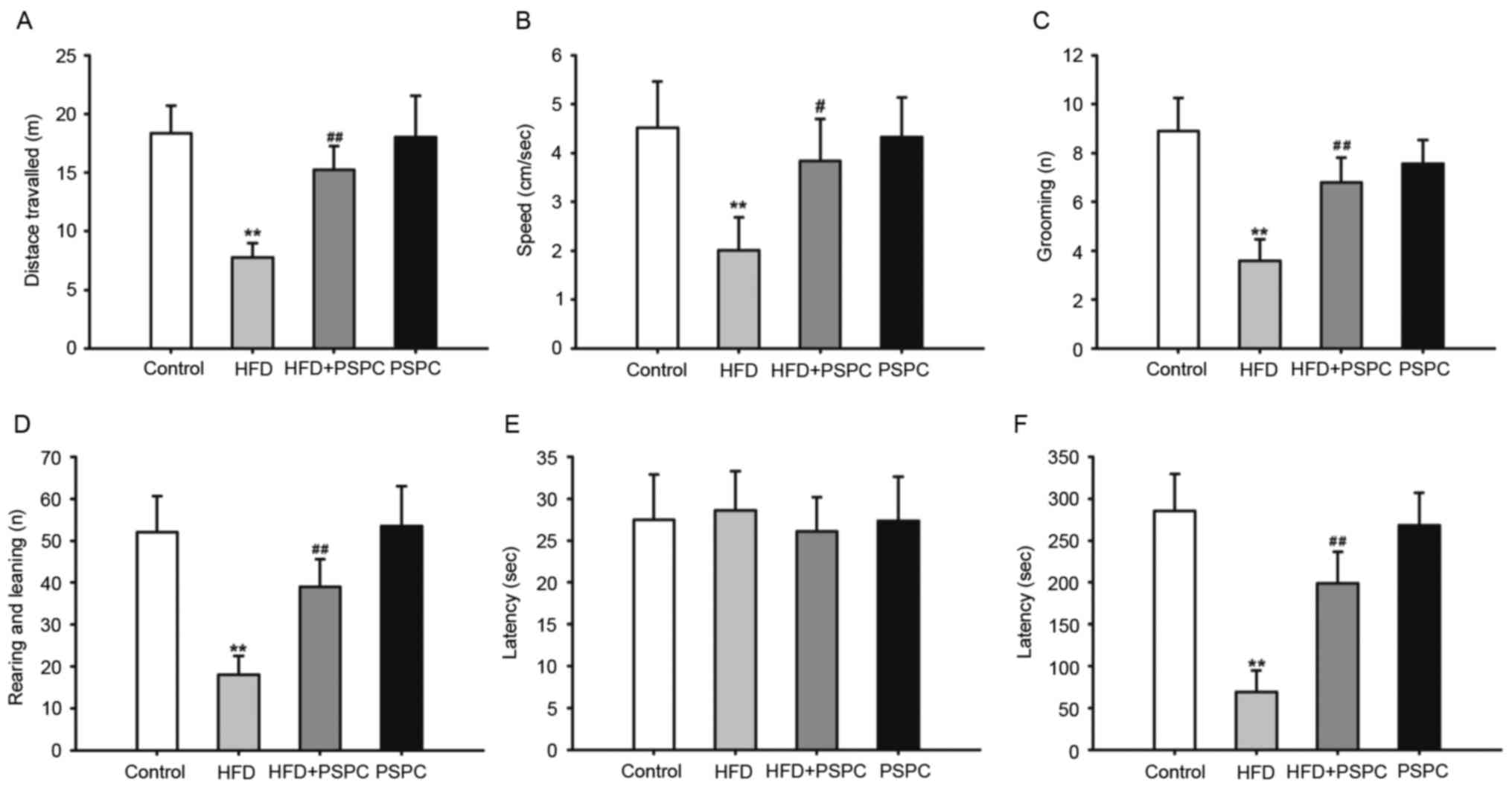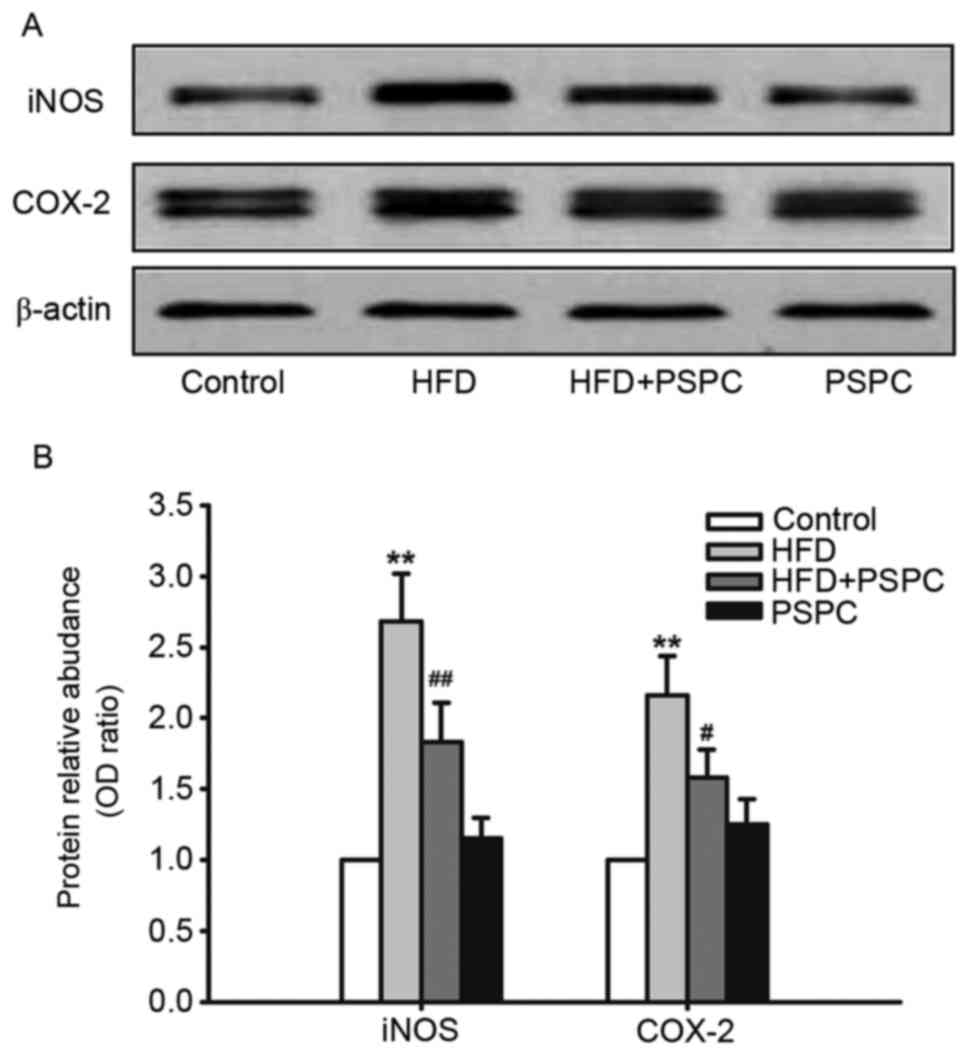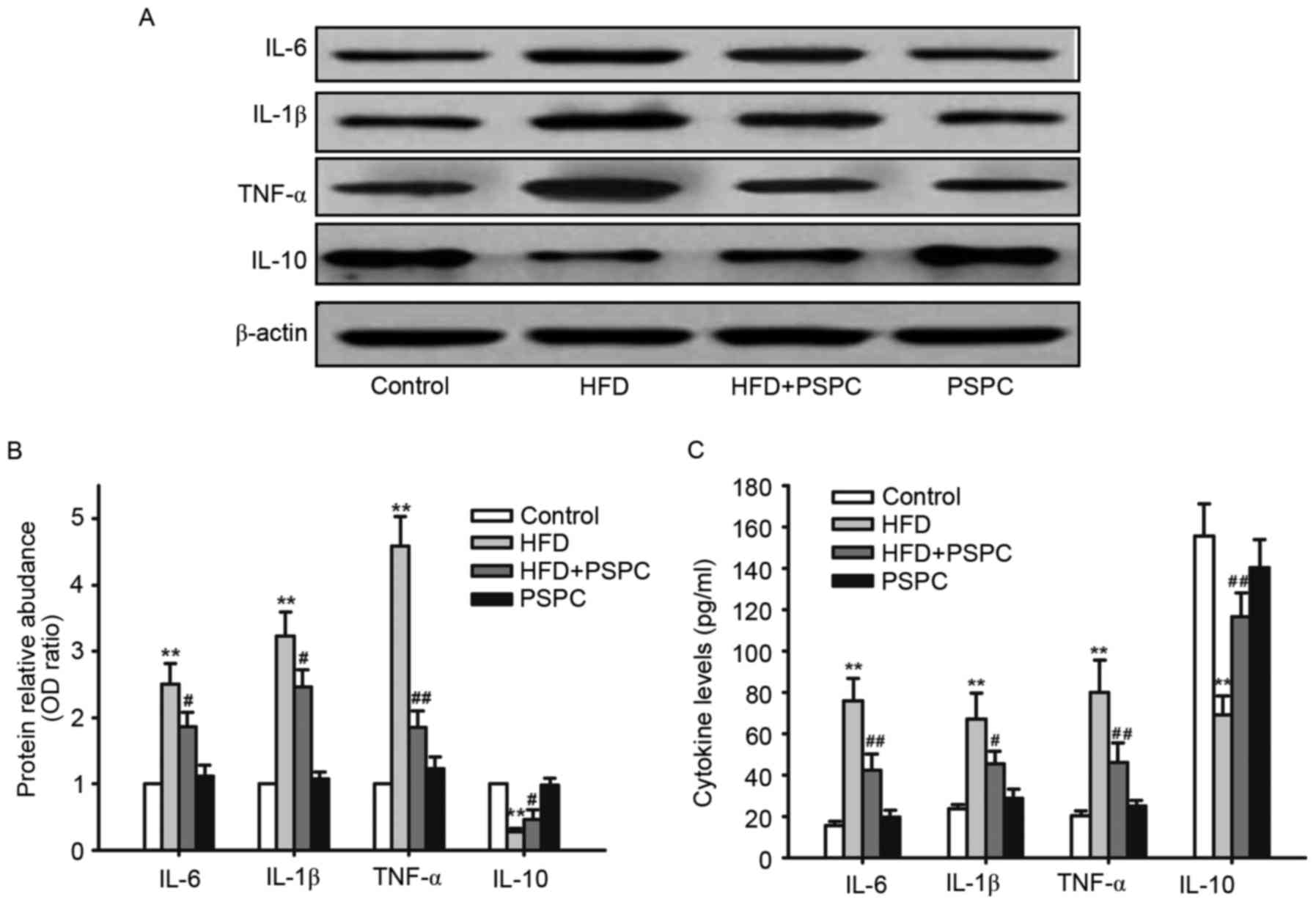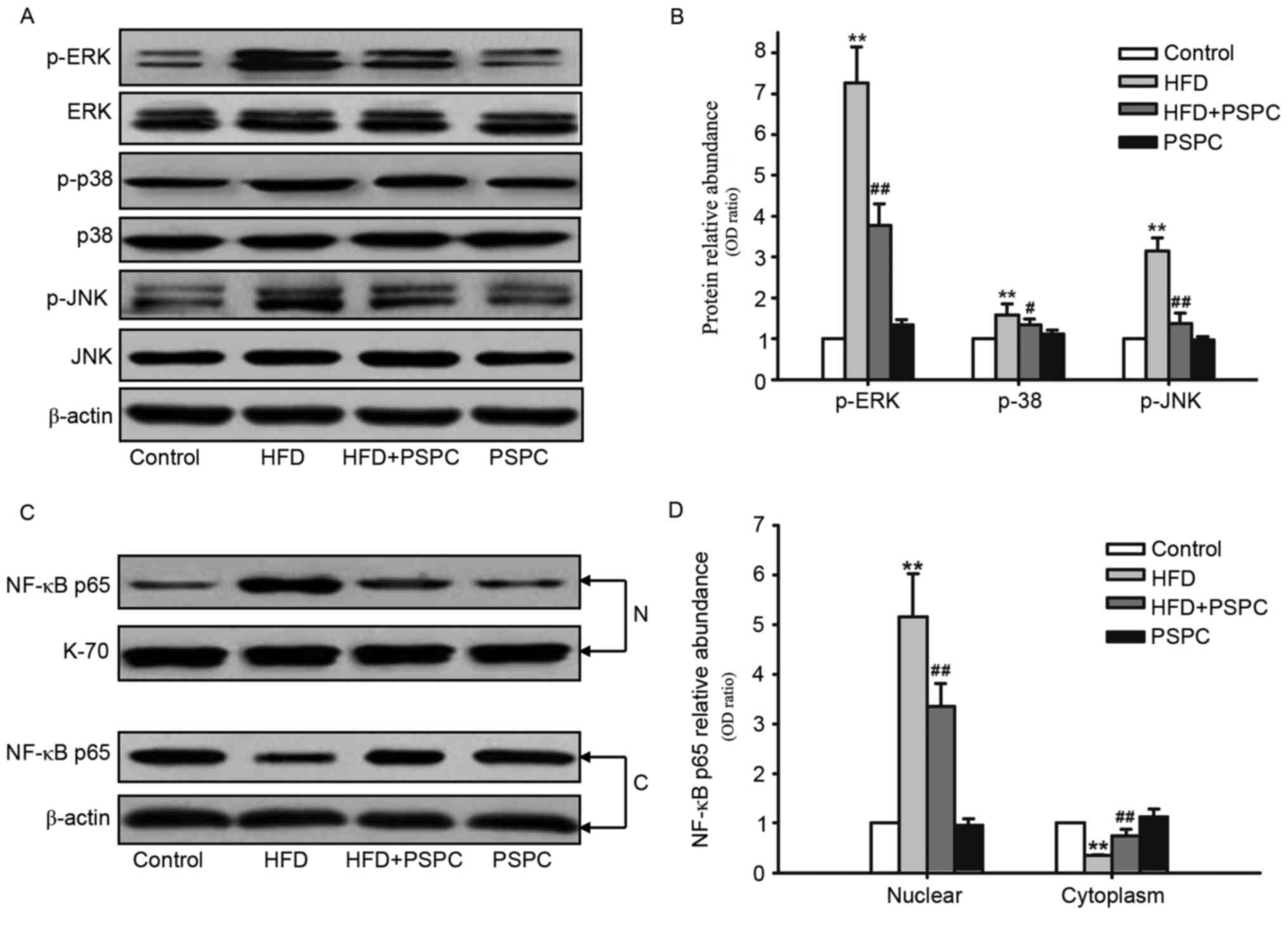|
1
|
Meissburger B, Ukropec J, Roeder E, Beaton
N, Geiger M, Teupser D, Civan B, Langhans W, Nawroth PP,
Gasperikova D, et al: Adipogenesis and insulin sensitivity in
obesity are regulated by retinoid-related orphan receptor gamma.
EMBO Mol Med. 3:637–651. 2011. View Article : Google Scholar : PubMed/NCBI
|
|
2
|
Trayhurn P and Beattie JH: Physiological
role of adipose tissue: White adipose tissue as an endocrine and
secretory organ. Proc Nutr Soc. 60:pp. 329–339. 2001; View Article : Google Scholar : PubMed/NCBI
|
|
3
|
Proença AR, Sertié RA, Oliveira AC,
Campaña AB, Caminhotto RO, Chimin P and Lima FB: New concepts in
white adipose tissue physiology. Braz J Med Biol Res. 47:192–205.
2014. View Article : Google Scholar : PubMed/NCBI
|
|
4
|
Smitka K and Marešová D: Adipose tissue as
an endocrine organ: An update on pro-inflammatory and
anti-inflammatory microenvironment. Prague Med Rep. 116:87–111.
2015. View Article : Google Scholar : PubMed/NCBI
|
|
5
|
Wellen KE and Hotamisligil GS:
Obesity-induced inflammatory changes in adipose tissue. J Clin
Invest. 112:1785–1788. 2003. View
Article : Google Scholar : PubMed/NCBI
|
|
6
|
Golay A and Bobbioni E: The role of
dietary fat in obesity. Int J Obes Relat Metab Disord. 21 Suppl
3:S2–S11. 1997.PubMed/NCBI
|
|
7
|
Ginsberg HN, Zhang YL and Hernandez-Ono A:
Metabolic syndrome: Focus on dyslipidemia. Obesity (Silver Spring).
14 Suppl 1:41S–49S. 2006. View Article : Google Scholar : PubMed/NCBI
|
|
8
|
Seidell JC: Dietary fat and obesity: An
epidemiologic perspective. Am J Clin Nutr. 67 3 Suppl:546S–550S.
1998. View Article : Google Scholar : PubMed/NCBI
|
|
9
|
Freeman LR, Haley-Zitlin V, Stevens C and
Granholm AC: Diet-induced effects on neuronal and glial elements in
the middle-aged rat hippocampus. Nutr Neurosci. 14:32–44. 2011.
View Article : Google Scholar : PubMed/NCBI
|
|
10
|
Thirumangalakudi L, Prakasam A, Zhang R,
Bimonte-Nelson H, Sambamurti K, Kindy MS and Bhat NR: High
cholesterol-induced neuroinflammation and amyloid precursor protein
processing correlate with loss of working memory in mice. J
Neurochem. 106:475–485. 2008. View Article : Google Scholar : PubMed/NCBI
|
|
11
|
Kang DH, Heo RW, Yi CO, Kim H, Choi CH and
Roh GS: High-fat diet-induced obesity exacerbates kainic
acid-induced hippocampal cell death. BMC Neurosci. 16:722015.
View Article : Google Scholar : PubMed/NCBI
|
|
12
|
Nerurkar PV, Johns LM, Buesa LM, Kipyakwai
G, Volper E, Sato R, Shah P, Feher D, Williams PG and Nerurkar VR:
Momordica charantia (bitter melon) attenuates high-fat
diet-associated oxidative stress and neuroinflammation. J
Neuroinflammation. 8:642011. View Article : Google Scholar : PubMed/NCBI
|
|
13
|
Orr CF, Rowe DB and Halliday GM: An
inflammatory review of Parkinson's disease. Prog Neurobiol.
68:325–340. 2002. View Article : Google Scholar : PubMed/NCBI
|
|
14
|
Qian L, Flood PM and Hong JS:
Neuroinflammation is a key player in Parkinson's disease and a
prime target for therapy. J Neural Transm (Vienna). 117:971–979.
2010. View Article : Google Scholar : PubMed/NCBI
|
|
15
|
Lee YJ, Han SB, Nam SY, Oh KW and Hong JT:
Inflammation and Alzhe-imer's disease. Arch Pharm Res.
33:1539–1556. 2010. View Article : Google Scholar : PubMed/NCBI
|
|
16
|
Simmons RK, Alberti KG, Gale EA, Colagiuri
S, Tuomilehto J, Qiao Q, Ramachandran A, Tajima N, Brajkovich
Mirchov I, Ben-Nakhi A, et al: The metabolic syndrome: Useful
concept or clinical tool? Report of a WHO Expert Consultation.
Diabetologia. 53:600–605. 2010. View Article : Google Scholar : PubMed/NCBI
|
|
17
|
Palacios N, Gao X, McCullough ML, Jacobs
EJ, Patel AV, Mayo T, Schwarzschild MA and Ascherio A: Obesity,
diabetes, and risk of Parkinson's disease. Mov Disord.
26:2253–2259. 2011. View Article : Google Scholar : PubMed/NCBI
|
|
18
|
Iwashina T: Contribution to flower colors
of flavonoids including anthocyanins: A review. Nat Prod Commun.
10:529–544. 2015.PubMed/NCBI
|
|
19
|
He J and Giusti MM: Anthocyanins: Natural
colorants with health-promoting properties. Annu Rev Food Sci
Technol. 1:163–187. 2010. View Article : Google Scholar : PubMed/NCBI
|
|
20
|
Huang WY, Liu YM, Wang J, Wang XN and Li
CY: Anti-inflammatory effect of the blueberry anthocyanins
malvidin-3-glucoside and malvidin-3-galactoside in endothelial
cells. Molecules. 19:12827–12841. 2014. View Article : Google Scholar : PubMed/NCBI
|
|
21
|
Pool-Zobel BL, Bub A, Schröder N and
Rechkemmer G: Anthocyanins are potent antioxidants in model systems
but do not reduce endogenous oxidative DNA damage in human colon
cells. Eur J Nutr. 38:227–234. 1999. View Article : Google Scholar : PubMed/NCBI
|
|
22
|
Kang HG, Jeong SH and Cho JH:
Antimutagenic and anticarcinogenic effect of methanol extracts of
sweetpotato (Ipomea batata) leaves. Toxicol Res. 26:29–35. 2010.
View Article : Google Scholar : PubMed/NCBI
|
|
23
|
Mano H, Ogasawara F, Sato K, Higo H and
Minobe Y: Isolation of a regulatory gene of anthocyanin
biosynthesis in tuberous roots of purple-fleshed sweet potato.
Plant Physiol. 143:1252–1268. 2007. View Article : Google Scholar : PubMed/NCBI
|
|
24
|
Qiu F, Luo J, Yao S, Ma L and Kong L:
Preparative isolation and purification of anthocyanins from purple
sweet potato by high-speed counter-current chromatography. J Sep
Sci. 32:2146–2151. 2009. View Article : Google Scholar : PubMed/NCBI
|
|
25
|
Harada K, Kano M, Takayanagi T, Yamakawa O
and Ishikawa F: Absorption of acylated anthocyanins in rats and
humans after ingesting an extract of Ipomoea batatas purple sweet
potato tuber. Biosci Biotechnol Biochem. 68:1500–1507. 2004.
View Article : Google Scholar : PubMed/NCBI
|
|
26
|
Zhang ZF, Fan SH, Zheng YL, Lu J, Wu DM,
Shan Q and Hu B: Purple sweet potato color attenuates oxidative
stress and inflammatory response induced by d-galactose in mouse
liver. Food Chem Toxicol. 47:496–501. 2009. View Article : Google Scholar : PubMed/NCBI
|
|
27
|
Shan Q, Lu J, Zheng Y, Li J, Zhou Z, Hu B,
Zhang Z, Fan S, Mao Z, Wang YJ and Ma D: Purple sweet potato color
ameliorates cognition deficits and attenuates oxidative damage and
inflammation in aging mouse brain induced by d-galactose. J Biomed
Biotechnol. 2009:5647372009. View Article : Google Scholar : PubMed/NCBI
|
|
28
|
Hwang YP, Choi JH, Yun HJ, Han EH, Kim HG,
Kim JY, Park BH, Khanal T, Choi JM, Chung YC and Jeong HG:
Anthocyanins from purple sweet potato attenuate
dimethylnitrosamine-induced liver injury in rats by inducing
Nrf2-mediated antioxidant enzymes and reducing COX-2 and iNOS
expression. Food Chem Toxicol. 49:93–99. 2011. View Article : Google Scholar : PubMed/NCBI
|
|
29
|
Zhang ZF, Lu J, Zheng YL, Wu DM, Hu B,
Shan Q, Cheng W, Li MQ and Sun YY: Purple sweet potato color
attenuates hepatic insulin resistance via blocking oxidative stress
and endoplasmic reticulum stress in high-fat-diet-treated mice. J
Nutr Biochem. 24:1008–1018. 2013. View Article : Google Scholar : PubMed/NCBI
|
|
30
|
Shan Q, Zheng Y, Lu J, Zhang Z, Wu D, Fan
S, Hu B, Cai X, Cai H, Liu P and Liu F: Purple sweet potato color
ameliorates kidney damage via inhibiting oxidative stress mediated
NLRP3 inflammasome activation in high fat diet mice. Food Chem
Toxicol. 69:339–346. 2014. View Article : Google Scholar : PubMed/NCBI
|
|
31
|
Hwang YP, Choi JH, Han EH, Kim HG, Wee JH,
Jung KO, Jung KH, Kwon KI, Jeong TC, Chung YC and Jeong HG: Purple
sweet potato anthocyanins attenuate hepatic lipid accumulation
through activating adenosine monophosphate-activated protein kinase
in human HepG2 cells and obese mice. Nutr Res. 31:896–906. 2011.
View Article : Google Scholar : PubMed/NCBI
|
|
32
|
Sun C, Fan S, Wang X, Lu J, Zhang Z, Wu D,
Shan Q and Zheng Y: Purple sweet potato color inhibits endothelial
premature senescence by blocking the NLRP3 inflammasome. J Nutr
Biochem. 26:1029–1040. 2015. View Article : Google Scholar : PubMed/NCBI
|
|
33
|
McGrath JC, Drummond GB, McLachlan EM,
Kilkenny C and Wainwright CL: Guidelines for reporting experiments
involving animals: The ARRIVE guidelines. Br J Pharmacol.
160:1573–1576. 2010. View Article : Google Scholar : PubMed/NCBI
|
|
34
|
Castellano C, Introini-Collison IB and
McGaugh JL: Interaction of beta-endorphin and GABAergic drugs in
the regulation of memory storage. Behav Neural Biol. 60:123–128.
1993. View Article : Google Scholar : PubMed/NCBI
|
|
35
|
Jain NK, Ishikawa TO, Spigelman I and
Herschman HR: COX-2 expression and function in the hyperalgesic
response to paw inflammation in mice. Prostaglandins Leukot Essent
Fatty Acids. 79:183–190. 2008. View Article : Google Scholar : PubMed/NCBI
|
|
36
|
Wang D, Liu L, Yan J, Wu W, Zhu X and Wang
Y: Cardiotrophin-1 (CT-1) improves high fat diet-induced cognitive
deficits in mice. Neurochem Res. 40:843–853. 2015. View Article : Google Scholar : PubMed/NCBI
|
|
37
|
Mémet S: NF-kappaB functions in the
nervous system: From development to disease. Biochem Pharmacol.
72:1180–1195. 2006. View Article : Google Scholar : PubMed/NCBI
|
|
38
|
Arthur JS and Ley SC: Mitogen-activated
protein kinases in innate immunity. Nat Rev Immunol. 13:679–692.
2013. View Article : Google Scholar : PubMed/NCBI
|
|
39
|
Krause DL and Muller N: Neuroinflammation,
microglia and implications for anti-inflammatory treatment in
Alzheimer's disease. Int J Alzheimers Dis. 2010:pii:
7328062010.
|
|
40
|
Giri S, Jatana M, Rattan R, Won JS, Singh
I and Singh AK: Galactosylsphingosine (psychosine)-induced
expression of cytokine-mediated inducible nitric oxide synthases
via AP-1 and C/EBP: Implications for Krabbe disease. FASEB J.
16:661–672. 2002. View Article : Google Scholar : PubMed/NCBI
|
|
41
|
Marcheselli VL and Bazan NG: Sustained
induction of prostaglandin endoperoxide synthase-2 by seizures in
hippocampus. Inhibition by a platelet-activating factor antagonist.
J Biol Chem. 271:24794–24799. 1996. View Article : Google Scholar : PubMed/NCBI
|
|
42
|
Koistinaho M and Koistinaho J: Role of p38
and p44/42 mitogen-activated protein kinases in microglia. Glia.
40:175–183. 2002. View Article : Google Scholar : PubMed/NCBI
|
|
43
|
Arthur JS and Ley SC: Mitogen-activated
protein kinases in innate immunity. Nat Rev Immunol. 13:679–692.
2013. View Article : Google Scholar : PubMed/NCBI
|
|
44
|
Wang YJ, Zheng YL, Lu J, Chen GQ, Wang XH,
Feng J, Ruan J, Sun X, Li CX and Sun QJ: Purple sweet potato color
suppresses lipopolysaccharide-induced acute inflammatory response
in mouse brain. Neurochem Int. 56:424–430. 2010. View Article : Google Scholar : PubMed/NCBI
|
|
45
|
Wi SM, Moon G, Kim J, Kim ST, Shim JH,
Chun E and Lee KY: TAK1-ECSIT-TRAF6 complex plays a key role in the
TLR4 signal to activate NF-κB. J Biol Chem. 289:35205–35214. 2014.
View Article : Google Scholar : PubMed/NCBI
|
|
46
|
Hayden MS and Ghosh S: Signaling to
NF-kappaB. Genes Dev. 18:2195–2224. 2004. View Article : Google Scholar : PubMed/NCBI
|
|
47
|
Kim KA, Lee IA, Gu W, Hyam SR and Kim DH:
β-Sitosterol attenuates high-fat diet-induced intestinal
inflammation in mice by inhibiting the binding of
lipopolysaccharide to toll-like receptor 4 in the NF-κB pathway.
Mol Nutr Food Res. 58:963–972. 2014. View Article : Google Scholar : PubMed/NCBI
|


















